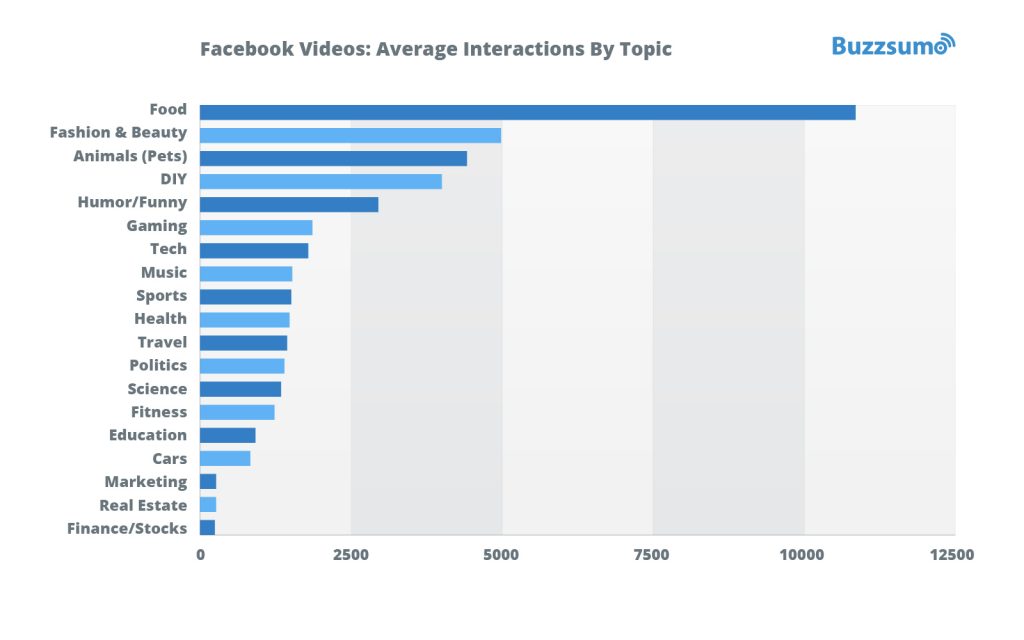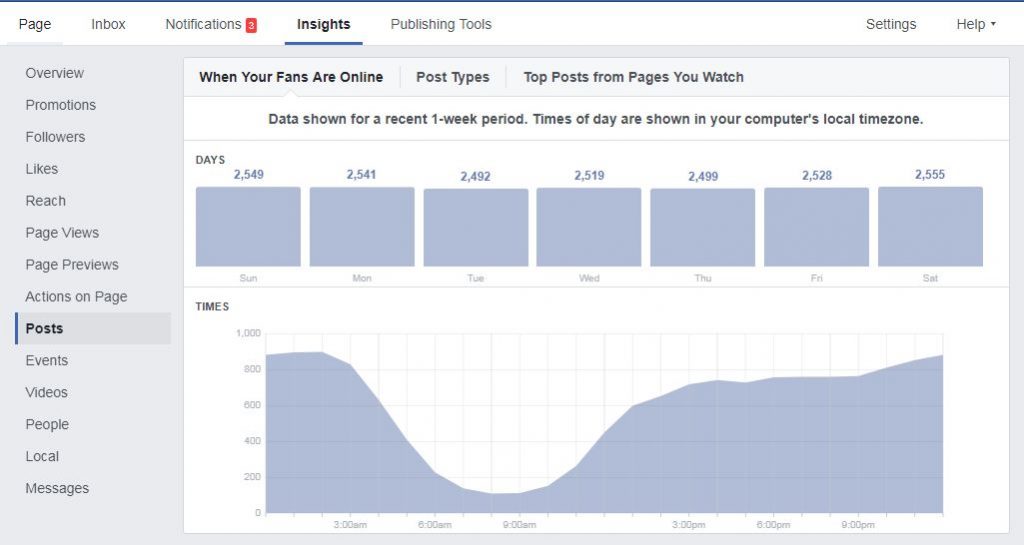You’ve probably heard about how important social media is these days – and the people who are telling you this aren’t blowing hot air.
According to Statista, 89% of people in Australia aged between 25 to 54, reported to currently using social media in March 2017.
With the majority of your potential donors and volunteers being on social media, it makes sense to get your not-for-profit organisation on there too.
But how do you grow your page so people actually start viewing it? And what makes for good, engaging content?
For this post, we will focus on content strategy for the most popular social media platform: Facebook.

Digging into Facebook’s algorithm
Before we begin with content strategy, we need to understand how Facebook determines which posts show on your Newsfeed.
With thousands of posts being created every second, how does Facebook determine which to show first?
Facebook’s system uses a 4 step process to determine how your Newsfeed looks:
- First FB looks at all of the recent posts from your friends and pages you like.
- It then considers the “signals” from each of these posts to determine which posts you might like the most. These “signals” essentially make up a scoring system based on thousands of different factors such as who posted it, current time, type of post, engagement levels (likes, shares, comments) and so forth.
- Facebook also considers your engagement history – so if you engage often with the posts from a particular page, they will show content from this page to you higher in your Newsfeed.
- For example, Facebook will often prioritise content from your friends first since they believe that you’d be most interested in what your friends are currently up to.
- Another example might be that, if you historically prefer viewing video posts, then Facebook is more likely to show you posts with videos.
- Facebook then takes all of these “signals” and tries to make a prediction on which posts you are more likely to engage with.
- After it calculates all of these data signals, Facebook then assigns a relevance score which determines which posts show up first in your Newsfeed. At best, it is an educated guess based on statistical probabilities, but they are constantly updating their algorithm to provide a better user experience.
- Note that this 4 step process happens every time you open Facebook and is constantly updated.
Content strategy for NFPs
Now that we understand the basics of how Facebook’s algorithm works, we now know that we need to create content that gets plenty of engagement, gets engaged with regularly (so more often the better) and try to get a high relevance score. If we are able to achieve this, then Facebook will show our content more often in the users’ Newsfeeds.
Here are a few good principles to follow when creating engaging posts.
1. Video content gets more engagement
In August 2017, Buzzsumo analysed 100 million Facebook videos and found that this form of media had the highest level of engagement and was more likely to reach people.
Right behind videos was photos – so we now know that videos and photos are the best way to reach people and encourage engagement on Facebook.
But not all videos are created equal – the top 5 topics that got the most amount of engagements were:
- Food
- Fashion & Beauty
- Animals
- DIY
- Humour / Funny
As an NFP organisation, you could integrate these topics into your Facebook videos for better engagement.
For example, if you were running a fundraising event selling food, you could film a video of the cooking process (or baking if you’re making cookies).
We also recommend looking at popular food-related Facebook pages and see which videos get the most amount of likes, comments and shares (take notes on the format, music used, editing and so forth).
You could also involve humour or animals in your videos for better engagement – the point is to be creative and find ways to include these popular topics in your videos.
Graph from Buzzsumo
Some more tips according to Buzzsumo’s analysis…
- For video length, try to keep it at around 60 – 90 seconds long, but don’t be afraid to go longer if you can fill it up with interesting content.
- For the introduction text (the post text at the top), you should keep this at less than 100 characters. Questions that lead into the video are a good way to get people to click and engage.
2. Appeal to emotion by using stories
Stories are a great way to get your message across as you can involve emotions and retain attention.
Furthermore, you can use tip #1 above and create a video that tells a story. If you can involve one or more of the top 5 engagement topics in your video and tell a story at the same time, you’ve got a great chance at going viral with your post.
The effects of an engaging story has been studied and results show that stories actually change our brain chemistry – which then encourages us to take certain actions like donating money to a stranger.
We recommend watching this short but fascinating 6 minute video to understand how stories affect our brains:
If you’d like to learn more about the narrative arc, we recommend reading this article from Reedsy.
Once you’ve come up with a great story and a video to go with it, try boosting it for a few days to gain some momentum.
3. Respond to comments on your posts and post consistently
While this one might seem obvious, it can be difficult to do as it requires a some time investment.
However, it is key that you respond to comments to interact with your users and promote discussion. You can gain valuable feedback and positive comments from people through Facebook (in addition to comments being one of the “signals” Facebook uses to calculate the relevance score).
You should also check your comments to make sure there aren’t any blatant spammers posting links – if you find any, delete them promptly.
*Bonus Tip* Also make sure to post consistently (it helps to have a schedule) – even if you find that you aren’t getting much engagement in the beginning, consistency is the key to growing your page. If you’re starting from absolutely zero, ask your friends / business contacts to like your page and put together a small advertising budget to boost some of your posts ($5 per post is enough to reach several hundred people on Facebook).
4. If you’ve run out of original ideas, share popular content from other pages (but add your own flair to it)
To follow up with the consistency tip above, sometimes you’ll find yourself running out of ideas for posts.
When this happens, it’s a good idea to simply share posts from other pages that aligns with your message or organisation.
Make sure to add your own flair or comments to it with the post to ensure that it isn’t a straight re-post of someone else’s content.
5. Use your Facebook page insights to know when to post
When is the best time to create your posts?
The answer to this lies in your Facebook Page Insights.
To get to your Page Insights, go to your Facebook page and look to the top navigation bar. From there go to Insights > Posts to see detailed graphs on what times your users are most active (based off the people who like your page).
In the example screenshot above, we can see that posting between 11pm – 3am would be best, since it’s when this page’s users are most active.
Note that every Facebook page will have a different “best time to post” since each page will have a different set of users, so make sure you navigate to your page insights to find out when the best time for you to post is.
In conclusion
Hopefully this post sparked some ideas for your NFP to try on social media.
The key takeaways are that videos do well on Facebook, use an engaging story, respond to comments and post consistently to grow your page. It also doesn’t hurt to invest a few dollars into boosting some of these posts, especially if you are starting from zero.
If you’d like assistance with any of these tips, please don’t hesitate to contact us.



